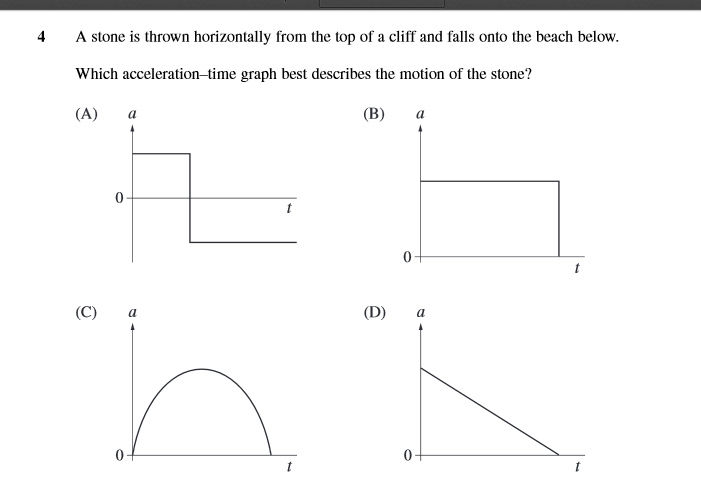Zlatman
Member
- Joined
- Nov 4, 2014
- Messages
- 73
- Gender
- Male
- HSC
- 2015
re: HSC Physics Marathon Archive
The simplest way I can explain why the speed relative to the earth doesn't change is with a head-on slingshot effect, where the spaceship initially moves in the opposite direction to the earth, and ends up moving in the same direction as the earth (relative to the sun).
F = V + 2U (where F is the final velocity of the spaceship, V is the initial velocity of the spaceship and U is the velocity of the earth; all relative to the sun)
NOTE: this is derived from both the conservation of kinetic energy and conservation of momentum.
Initially, the spaceship moves at a velocity V, while the earth is travelling with a velocity U in the opposite direction (both relative to the sun). Relative to the Earth, the spaceship is moving at a speed of V + U.
[V - (-U) = V + U] (imagine or use vector diagram - considering the initial direction of the spaceship as the positive direction)
After the slingshot effect, the spaceship is travelling with a velocity V + 2U in the same direction as the Earth, which is still moving at a speed of U (since the change in velocity is pretty much negligible). However, relative to the earth, the spaceship will still be travelling with a speed of V + U.
[-(V + 2U) - (- U) = - V - U = -(V + U)] (same speed, opposite direction)
Thus, the spaceship's velocity relative to the sun increases by 2U, but relative to the earth, its speed does not change.
EDIT: (This is how the Jacaranda textbook explains it)
Jupiter has an orbital velocity of about 13000 m/s relative to the Sun, and let us assume that the spacecraft has a velocity of 15000 m/s relative to the Sun.
In order to visualise how this effect occurs, it is helpful to consider the relative velocities. If we consider the velocity of the spacecraft relative to Jupiter then the situation is as if Jupiter were standing still. When a small object collides elastically with a very large, massive object, the small object will rebound without loss of speed — consider a ball bouncing against a wall. Similarly, our spacecraft approaches Jupiter at (13000 + 15000) or 28000 m/s relative to it, swings around behind it and then slingshots back out in front at 28000 m/s relative to Jupiter. Look now at what has happened to the velocity of the spacecraft relative to the Sun. If Jupiter’s velocity is 13000 m/s and the spacecraft is moving ahead 28000 m/s faster than it, the spacecraft is now travelling at 41000 m/s relative to the Sun.
The simplest way I can explain why the speed relative to the earth doesn't change is with a head-on slingshot effect, where the spaceship initially moves in the opposite direction to the earth, and ends up moving in the same direction as the earth (relative to the sun).
F = V + 2U (where F is the final velocity of the spaceship, V is the initial velocity of the spaceship and U is the velocity of the earth; all relative to the sun)
NOTE: this is derived from both the conservation of kinetic energy and conservation of momentum.
Initially, the spaceship moves at a velocity V, while the earth is travelling with a velocity U in the opposite direction (both relative to the sun). Relative to the Earth, the spaceship is moving at a speed of V + U.
[V - (-U) = V + U] (imagine or use vector diagram - considering the initial direction of the spaceship as the positive direction)
After the slingshot effect, the spaceship is travelling with a velocity V + 2U in the same direction as the Earth, which is still moving at a speed of U (since the change in velocity is pretty much negligible). However, relative to the earth, the spaceship will still be travelling with a speed of V + U.
[-(V + 2U) - (- U) = - V - U = -(V + U)] (same speed, opposite direction)
Thus, the spaceship's velocity relative to the sun increases by 2U, but relative to the earth, its speed does not change.
EDIT: (This is how the Jacaranda textbook explains it)
Jupiter has an orbital velocity of about 13000 m/s relative to the Sun, and let us assume that the spacecraft has a velocity of 15000 m/s relative to the Sun.
In order to visualise how this effect occurs, it is helpful to consider the relative velocities. If we consider the velocity of the spacecraft relative to Jupiter then the situation is as if Jupiter were standing still. When a small object collides elastically with a very large, massive object, the small object will rebound without loss of speed — consider a ball bouncing against a wall. Similarly, our spacecraft approaches Jupiter at (13000 + 15000) or 28000 m/s relative to it, swings around behind it and then slingshots back out in front at 28000 m/s relative to Jupiter. Look now at what has happened to the velocity of the spacecraft relative to the Sun. If Jupiter’s velocity is 13000 m/s and the spacecraft is moving ahead 28000 m/s faster than it, the spacecraft is now travelling at 41000 m/s relative to the Sun.
Last edited:


